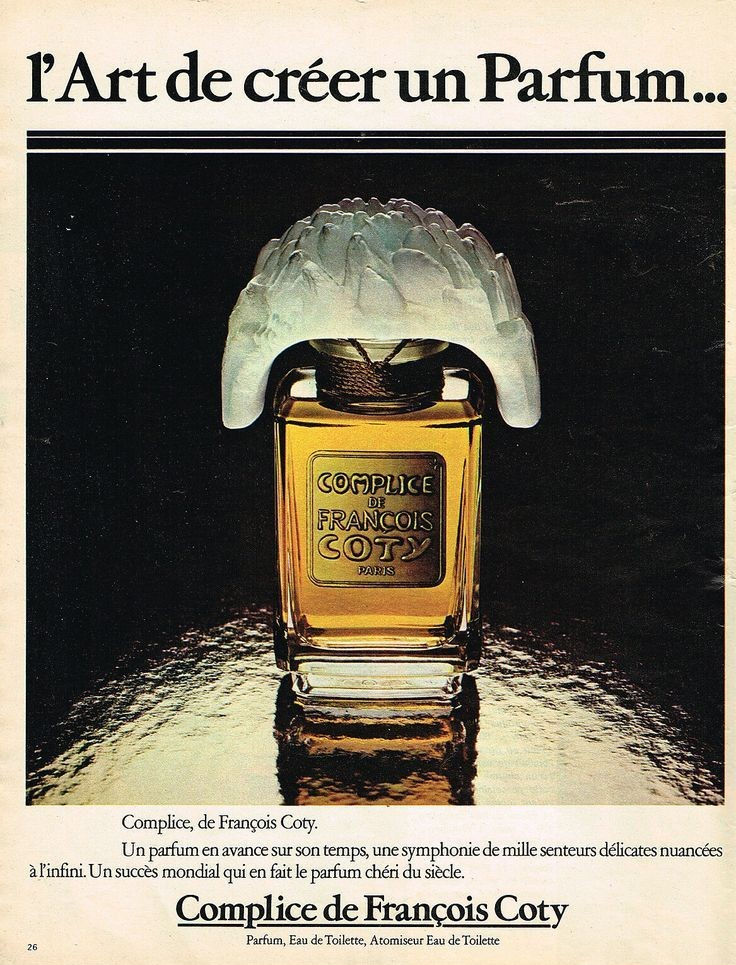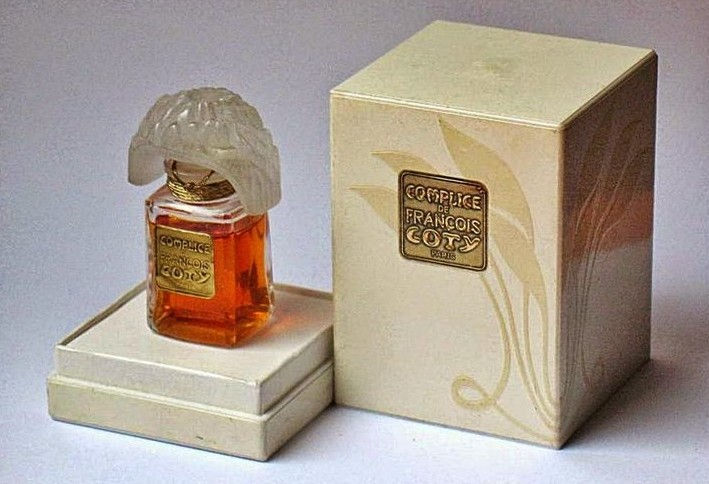François Coty – the French perfumer and businessman, the book, and his perfume
- mymoderndarcy
- Jul 9
- 7 min read

Dear readers, in the world of refined menswear, many of us tend to gravitate toward the designer and the tailor behind a brand, whether it is their namesake establishment or not. In recent years, I have noticed a similar phenomenon in the world of perfume, particularly in the luxury niche perfume industry. Fragrance enthusiasts are not only drawn to the alluring and intricate olfactory experience, but also to the perfumers who create these scents; this has turned these invisible olfactory artists into celebrities in their field. While many talented new-generation perfumers have emerged in recent decades, thanks to the constant blooming of luxury and niche perfumes, some of us prefer to revisit the past to enrich our knowledge about the history of perfume; understanding its origins and uncovering its historic mysteries allows us to compare its evolution —whether in style, societal, or psychological factors — to the present day, examining the psychology of how and why people wear perfume. Of course, one of the most fascinating aspects is studying historic legendary perfumers, as they are the ones who wrote the history of perfume from the very beginning; they paved the way for how perfume became associated with our lives, self-expression, and personal style. Today, we will explore the life and work of one of the most legendary late French perfumers: Mr. François Coty.

Photo source: Pinterest
If you are a perfume enthusiast or avid collector, the name François Coty should be no stranger to you; a French perfumer, businessman, politician, and patron of the arts, he was the Founder of the Coty perfume company. Born in May 1874 in Ajaccio, Corsica, as Joseph Marie François Spoturno, François lost his parents as a child and was raised by his grandmother in Marseille. After serving in the military for several years, he married Yvonne Alexandrine Le Baron in Paris, and changed his last name to Coty (as we know it today) to make it appear more French. It was around this time that destiny introduced him to the world of perfume; he met a pharmacist named Mr. Raymond Goery, who made and sold perfume at his shop in Paris. From there, François began learning about perfumery, which led to the creation of his very first perfume, Cologne Coty. Later, he met Mr. Léon Chiris, whose family had long been manufacturers and distributors of perfume with factories in Grasse. François studied perfumery and began working on a perfume named La Rose Jacqueminot.

Photo source: Pinterest
In 1904, he started selling his perfumes to department stores, boutiques, and barbershops, though it was not an immediate success. Undeterred, François, with his keen sense of style, marketing, and business acumen, made an ambitious and unprecedented move: he dropped a bottle of La Rose Jacqueminot on the countertop at the Grands Magasins du Louvre, one of the most prominent Parisian department stores at the time. François understood that the essence of a perfume's success lay in its attractive bottle, as a result, he paid meticulous attention to the design and packaging of his perfume bottles. La Rose Jacqueminot came in a Baccarat bottle, and he collaborated with the legendary ceramist and jeweler, Mr. René Lalique, to design bottles for his early perfumes. The alluring and unique scent, combined with the exquisite packaging, caused demand for François' perfume to surge — the entire stock sold out in minutes. This popularity earned him a permanent space to sell his products in the store, and later, made him a millionaire, establishing Coty as a major player in the perfume industry.

Photo source: Pinterest

Photo source: Pinterest
Beyond the blockbuster La Rose Jacqueminot, the House of Coty also produced several other popular perfumes, including Ambre Antique (1905) and L'Origan (1905), both created by François in collaboration with Lalique. The ceramist also designed labels for Coty's perfumes, printed on a gold background with raised lettering in the iconic “Art Nouveau” style, which was popular during that era. The logo incorporated floral motifs, nature, and female figures, reflecting the artistic trends of the time. While Coty's perfumes were initially considered luxury goods accessible only to the affluent upper class, François recognized the business potential of the mass market. He later launched a range of perfumes at more affordable prices by combining natural essences with synthetic ingredients, reducing production costs. These perfumes were packaged in smaller, plainer bottles and marketed to middle- and working-class women. Besides his sensitivity and intelligence in capturing business opportunities from different customer segments, François was also a pioneer in creating perfume gift sets, which included identically scented products such as soap, cream, and cosmetics to complement the perfume.

Photo source: Pinterest
The Coty brand continued to thrive, even on the eve of World War I. Back then, Coty's perfumes were distributed worldwide in major cities such as New York, London, and Moscow. After the war, demand for perfume grew rapidly. The brand even expanded its product offerings to include cosmetics and skincare, as well as its distribution network to Asia and Latin America, making François one of the wealthiest men in France by the late 1920s. Beyond his career as a perfumer and businessman, François also purchased the French newspaper, Le Figaro, in 1922, and became actively involved in French politics, even serving briefly as a senator for Corsica. However, his personal life was far more complicated, which eventually led to the downfall of his fortune. Though he had two children with his wife, Yvonne, he was known for his numerous mistresses and illegitimate children, which affected his public image. His fortune began to diminish after 1926 when his newspaper companies started losing money; the financial crisis of the Great Depression further impacted his perfume business, and his divorce caused the final blow to his finances, the perfumer and businessman eventually passed away at his home in Louveciennes in 1934. You may wonder: “What happened to the House of Coty afterward?” In brief, the company was first sold by Yvonne, François' first wife, to the pharmaceutical conglomerate Pfizer. In 1992, Pfizer sold it to the German company Joh. A. Benckiser. After merging with the Lancaster Group in 1996, Coty became one of the leading mass fragrance companies, producing perfumes, cosmetics, and skincare products for a diverse range of brands — from high-end fashion designers to mass-market labels. Perhaps one of the perfumes or grooming products you use today is likely produced by Coty.

Photo source: Pinterest

Photo source: Pinterest
While the modern company is impressive, I am more fascinated by its Founder, Mr. François Coty, the originator of this fragrance legacy over a century ago. My fascination with him began a few years ago when I started my own perfume brand, and I felt compelled to trace the history of historic French perfume houses and perfumers of the past. Despite his downfall, François' impeccable classic French style, charm, and enigmatic aura captivate me. His courage, ambition, and conviction to create beautiful things with his own hands make him even more intriguing. Vintage photographs of his portraits reveal a man impeccably dressed and groomed, his posture and facial expression exuding confidence, elegance, and steadfast commitment to almost every aspect of his life — his business, his dreams, his creations, and his style. His vision and innovation, choosing to start with a feminine product rather than one familiar to his gender, along with his artistic sensitivity and relentless, uncompromising pursuit of exceptional perfumes, make his story deeply compelling. In an era where few men achieve such a balance of style, creativity, and business success, François stands out as a rare example in history. My obsession with this charismatic and talented perfumer and entrepreneur grew, leading me to explore his perfume creations and artifacts.

Photo source: Pinterest

Photo source: Pinterest
Throughout his life, François has created more than 30 perfumes, the most well-known include La Rose Jacqueminot (1904), L'Origan (1905), Ambre Antique (1905), Cologne Cordon Vert (1905), Muguet (1910), Styx (1911), Héliotrope (1913), Chypre (1917), Émeraude (1921), and L'Aimant (1927). These perfumes are now among the rarest and most sought-after vintage fragrances for vintage perfume collectors, with first-edition bottles that can only be found in historic museums, or the private collection of avid perfume enthusiasts. Beyond his iconic women's perfumes, François also created Knize Ten (1924) for the historic Viennese men's tailoring house, Knize. Though I have yet to experience its scent, this creation reflects his association with refined menswear, and his awareness of men's grooming products and lifestyle.

Photo source: Pinterest

Photo source: Pinterest
As a perfume enthusiast and collector, I have long yearned to experience the creations of this great French perfumer. Known as the "father of modern perfumery," his work holds significant prestige in the French perfume industry. To truly understand his artistry, I sought to trace his creations and experience them firsthand. My quest led me to Complice, a perfume launched in 1973, decades after François' passing. Created by the late French perfumer, Mr. Jean-Pierre Weil, Complice is classified as a floral aldehyde fragrance for women.


It opens with clean floral notes of African orange flower, bergamot, aldehydes, and a hint of spice; the heart reveals intense floral notes of rose, lily-of-the-valley, lilac, carnation, narcissus, and orris root, while the dry-down features musky woody notes of oak moss, musk, vetiver, benzoin, civet, and sandalwood. Though not created by François himself, the bottle design pays homage to the elegant Belle Époque era, with “Art Nouveau” influences reminiscent of Lalique's luxurious glasswork. The cascading-floral-like stopper and gold label echo the heyday of Coty's early 20th-century aesthetic, the high-end French elegance and flamboyance; by holding this precious little bottle, I understand why it has captured countless vintage perfume collectors’ hearts, especially those drawn to Coty's early creations.


Years ago, I stumbled upon a stunning coffee table book about Coty’s perfumes and François himself, titled “Coty: Parfumeur and Visionary” by Mr. Keiichi Tahara and Ms. Elisabeth Barille, published by Editions Assouline in 1996. This beautiful book documents the history of the House of Coty, featuring rare historic photos of the perfume factory, a showcase of its iconic fragrances, glimpses into its perfumery boutique interiors, and intriguing stories about François — his work ethic, relentless standards, and more. Though the book had been tucked away in a storage box alongside other rarely read volumes for years, acquiring Complice inspired me to revisit it.


Though my journey with François Coty’s legacy has come full circle, questions still linger in my mind: “What if François had retained control of his company? Could he have steered the House of Coty toward a different fate? If so, how might the brand look today? And what if he had resisted personal entanglements, devoting himself entirely to his business and artistic creations? Would his story have ended in triumph instead?”

Photo source: Pinterest

Photo source: Pinterest
Revisiting this legendary perfumer’s life offers more than solely an admiration for his artistry — it serves as a life lesson for the modern man, myself included. True success demands not only the ability to craft beauty with one’s hands and mind but also the wisdom to guard against self-sabotage. In matters of love and ambition, boundaries and discipline may seem antiquated, yet they remain essential. Without them, even the most brilliant minds risk unraveling. François’ legacy thus endures not just in his perfumes, but in the stark reminder that creation and self-mastery must walk hand in hand.

Photo source: Pinterest
